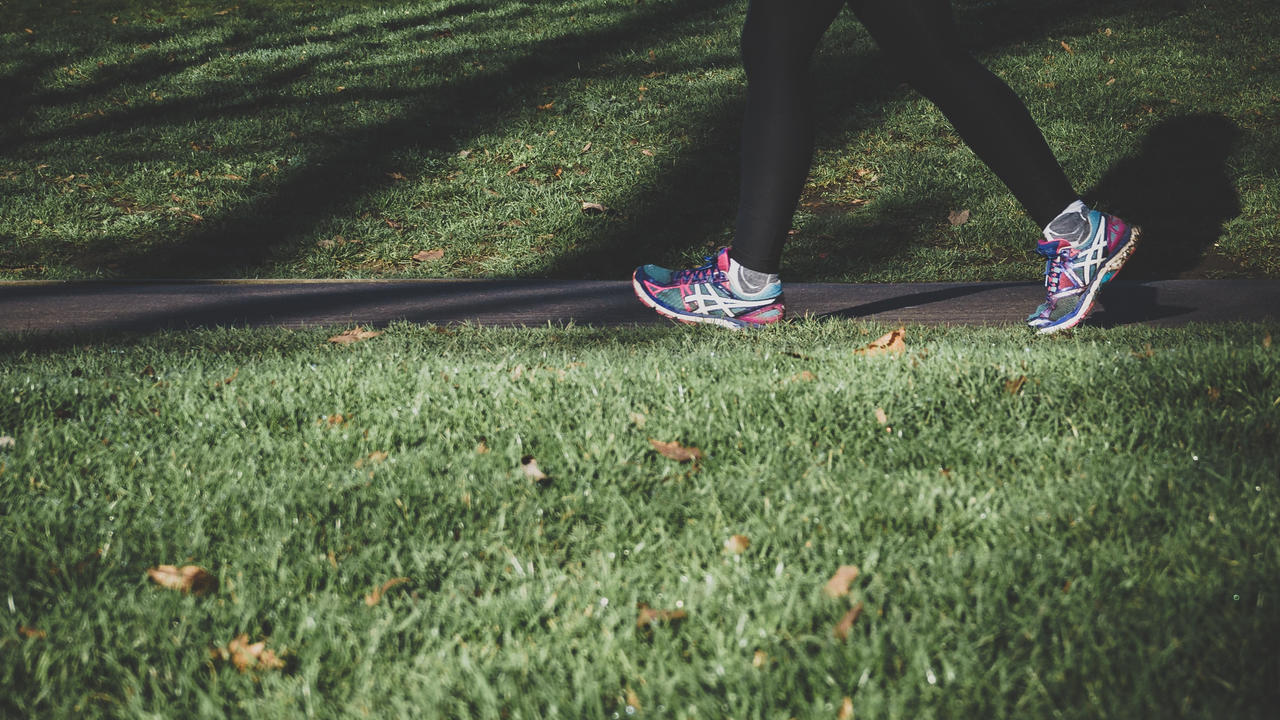Is walking everyday enough exercise? This one change is key.

You might be surprised to know that the speed that you walk can be reflective of how long you will live. As we age, walking speed tends to decrease. Your ability to walk is your key to independence; we likely all know someone who lost their independence concurrently with the loss of their mobility.
Walking is, in my nerdy opinion, an almost magical feat. We need millions of neurons, most of our skeletal muscles, and an assortment of small and large bones to all work in unison in order to take a single step. Add in energy systems and perceptual input, and you start to get a picture of how complex human movement really is.
When there is a change (or damage occurs) in any of the systems related to walking (like the changes that arise from a stroke or a hip fracture), the speed of walking can slow. Age-related decline (e.g., loss of muscle) can also cause you to slow your pace. Slowed walking speed in older women and ill health or reduced function are so closely related that some researchers have coined the term the “sixth vital sign.”
When walking speed goes down, not only are we slower, we’re also less stable, usually have less “efficiency” in our stride, and our coordination gets worse. All of this can lead to a higher risk of falling and injury.
So how fast should you be walking? Healthy walking speed is typically measured in meters per second (below one meter per second is usually cause for concern). Meters per second are measured because many tests of walking speed are relatively short distance and are done in a controlled setting. According to a recent study on walking speed and health, the researchers reported that “Studies have observed that a 0.1 m/s reduction in gait speed increases the risk of death by 12%.”[1]
You can do your own “meters per second” assessment by measuring out 10 metres on a path that has room for you to come up to regular speed (about 5-7 meters on each side of your measured area). Make sure your testing area is level and free from any tripping hazards.
It’s best to have someone else to help time you, starting the clock from when you cross the start line to when you pass through the finish line. Walk as quickly (and safely) as you can along the path (with room to come up to speed before the measurement area). Make sure you have someone to spot you if you feel unsteady. As a general rule, walking less than 1 meter per second should be cause for concern. Typical speeds (depending on age) are between 1.3 to 1.1 seconds
If you want to understand your walking speed when you’re just getting around outside, try measuring km/hr (or mph for our sisters in the U.S.). Most smartphones or wrist-based wearable technology (e.g., Fitbit) will do the trick. A good walking speed is about 5km/hr or around 3 mph.
What to do if you’re a shuffler and not a strider? The suggestions below are the best way to maintain or improve your walking speed as you age:
1. Improve your leg strength: I know I sound like a broken record with this recommendation, but good leg strength makes all the difference in how you age. Some of the most straightforward options are standing and sitting back down into a chair, and toe and heel raises (hold on to a counter then shift your weight into your toes and then into your heels). Do these exercises in two sets of 8-12 repetitions at least two times per week.
2. Stretch regularly: You can read more about flexibility and grab a free stretching handout in this post.
3. Mix it up: Try creating a little more challenge in your walking pattern. You can try things like short bursts of a faster pace, or changing directions (if you want to see an example video head over to our private Facebook group).
4. Create some obstacles: Try placing some stable (and low) objects at points around a room. Observe what happens when you try to navigate over them. Practice this exercise regularly.
If you want to be inspired to walk more (or encourage someone else in your life to start walking), you can check out my favourite short documentary about walking. The Walking Revolution outlines all of the ways that by merely walking more, we can improve our health and our communities.
See you on the trails.
Your sister in health,

[1] Guedes, R. de C., Dias, R. C., Neri, A. L., Ferriolli, E., Lourenço, R. A., & Lustosa, L. P. (2019). Decreased gait speed and health outcomes in older adults: Rede FIBRA’s data. Fisioterapia e Pesquisa, 26(3), 304–310.
Learn how to love your Midlife
I have a limited number of spaces for new coaching clients. Get personalized support to manage weight, build strength, and improve your confidence to help you live your very best midlife.
We hate SPAM. We will never sell your information, for any reason.


